#chauliognathus pensylvanicus
Photo




Goldenrod Soldier Beetles (Chauliognathus pensylvanicus) on other yellow flowers
Phipps Conservatory and Botanical Gardens, Pittsburgh, Pennsylvania
August 27, 2022
#bug#bugs#photographers on tumblr#Chauliognathus pensylvanicus#goldenrod soldier beetle#beetle#beetles#Coleoptera#insect#insects#nature#animals#yellow#entomology#bugblr
177 notes
·
View notes
Text
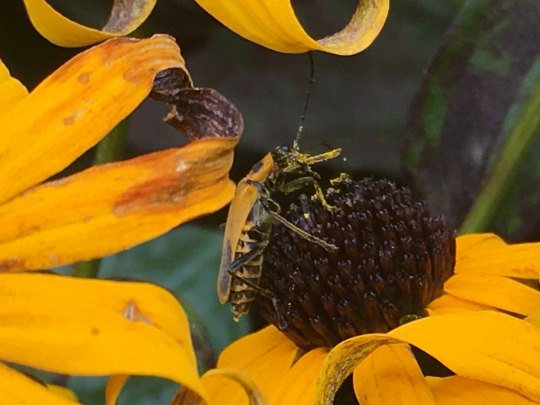

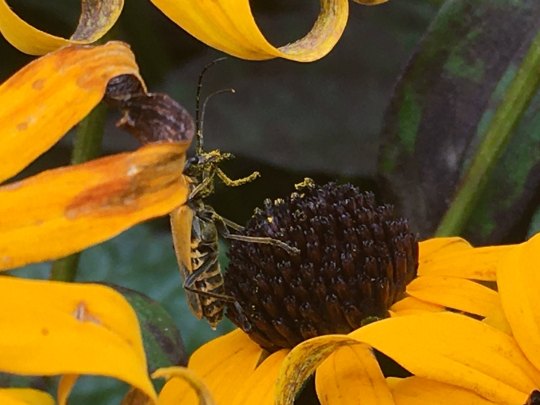

goldenrod soldier beetle, Chauliognathus pensylvanicus
4 notes
·
View notes
Photo


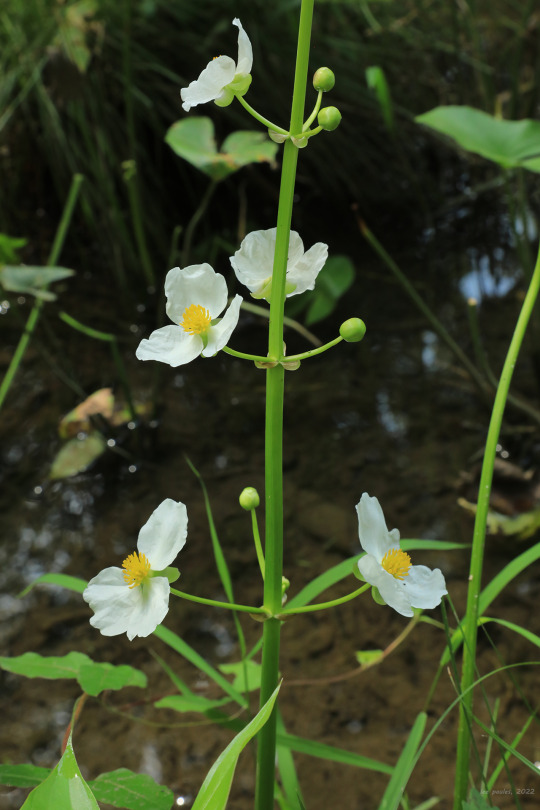

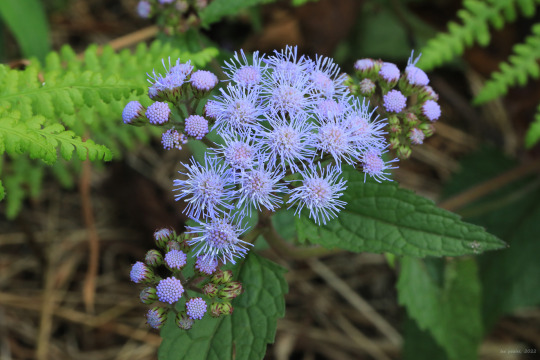



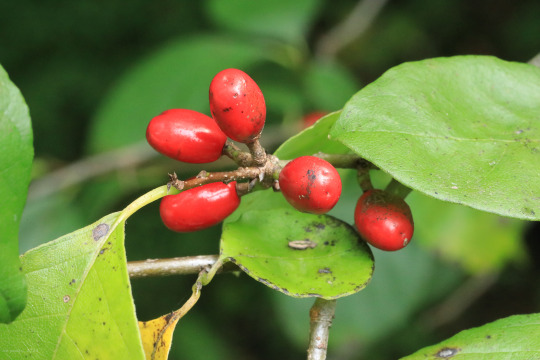
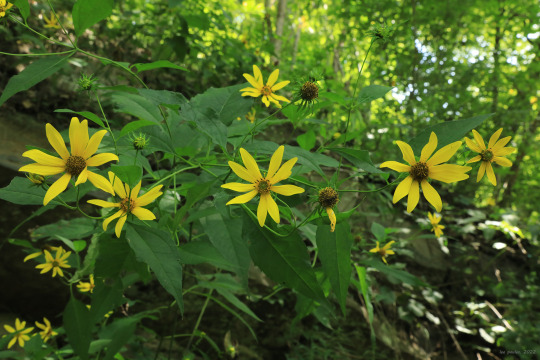
Photos from a late summer bike ride on the Mon River Trail. With autumn just around the corner, the climatic, life-sustaining ceremonies of the season have taken on a frantic, bittersweet urgency, from the proliferation of late summer blooms to the frantic chirrups of insects in search of mates before they succumb to the first frost of October. As the deep greens of summer fade and begin to sacrifice themselves to a fiery self-immolation, I salute Nature’s relentless push to plant the seeds of next year’s renewal.
From top: broadleaf arrowhead (Sagittaria latifolia), also known as duck-potato and wapato, an attractive aquatic plant whose edible tuber was an important source of starch for Native Americans; great blue lobelia (Lobelia siphilitica); a showy relative of cardinal flower with blue, split-lip flowers; blue mistflower (Conoclinium coelestinum), also known as wild ageratum and blue boneset, an unusual late summer aster with disc flowers only; tall coreopsis (Coreopsis tripteris), also known as tall tickseed, a grand, stately perennial up to 8 feet tall with distinctive tripartite leaves; a goldenrod soldier beetle (Chauliognathus pensylvanicus) navigating a wingstem flower (Verbesina alternifolia); northern spicebush (Lindera benzoin), a colonizing shrub whose luminous yellow leaves in fall contrast with its brilliant-red, aromatic berries; and pale-leaved sunflower ( Helianthus strumosus), a perennial sunflower whose leaves are mostly opposite in arrangement with long petioles and pale undersides.
#appalachia#vandalia#west virginia#mon river trail#late summer#life#renewal#flora#wildflowers#insects#sagittaria latifolia#broadleaf arrowhead#duck-potato#wapato#lobelia siphilitica#great blue lobelia#conoclinium coelestinum#blue mistflower#wild ageratum#blue boneset#coreopsis tripteris#tall coreopsis#tall tickseed#chauliognathus pensylvanicus#goldenrod soldier beetle#verbesina alternifolia#wingstem#Lindera benzoin#northern spicebush#helianthus strumosus
100 notes
·
View notes
Text

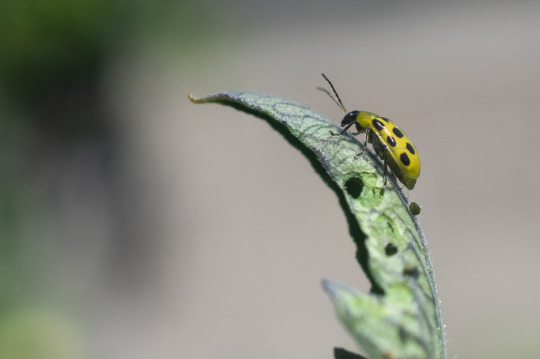

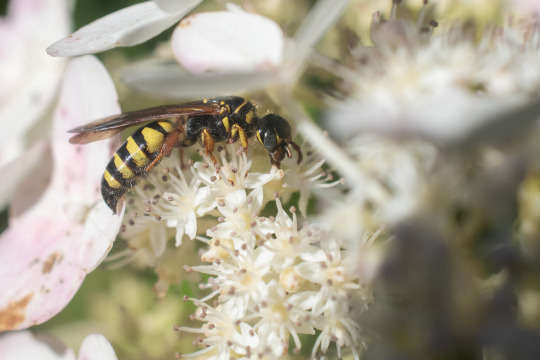
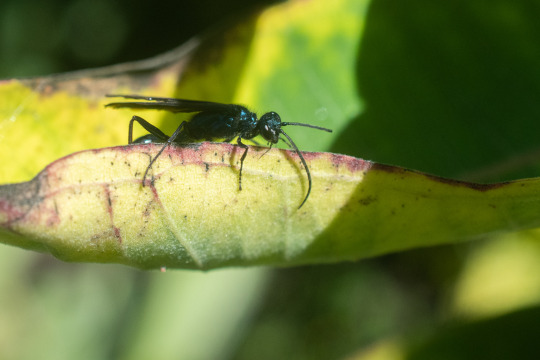


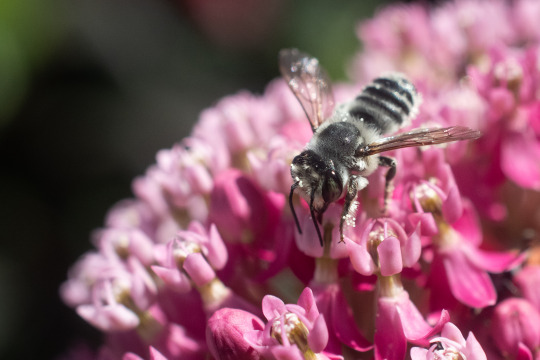





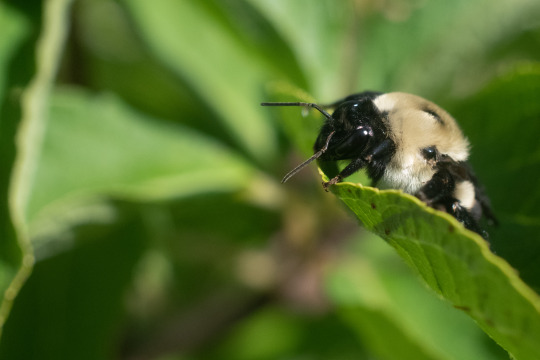
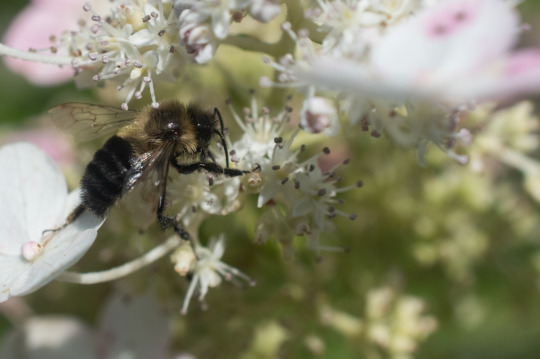
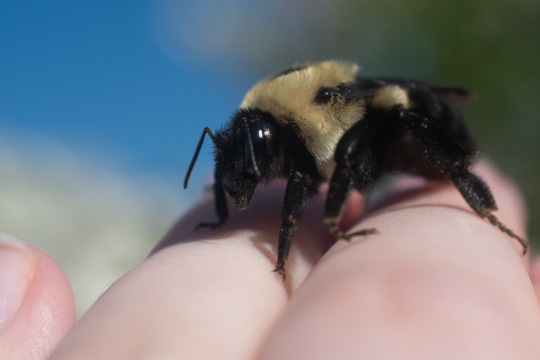


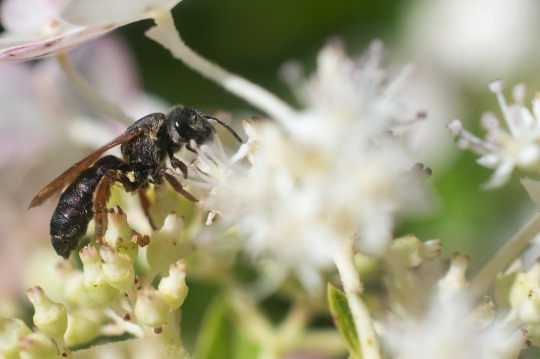

European Paper Wasp (Polistes dominula) ♂
Spotted Cucumber Beetle (Diabrotica undecimpunctata)
Great Golden Digger Wasp (Sphex ichneumoneus)
Five-banded Thynnid Wasp (Myzinum quinquecinctum)
Common Blue Mud-dauber Wasp (Chalybion californicum)
Chrysidini sp.
Four-banded Stink Bug Wasp (Bicyrtes quadrifasciatus)
Megachile sp.
Parallel-striped Sweat Bee (Halictus parallelus)
Myzinum maculatum ♀
Archytas apicifer?
Goldenrod Soldier Beetle (Chauliognathus pensylvanicus)
Archytas apicifer?
Common Eastern Bumble Bee (Bombus impatiens) ♀
Common Eastern Bumble Bee (Bombus impatiens) ♂
Common Eastern Bumble Bee (Bombus impatiens) ♀
Lobed Mason Wasp (Ancistrocerus antilope)
Narrow-headed Marsh Fly (Helophilus fasciatus)
Hawthorn Mining Bee (Andrena crataegi)?
Vespula Sp.
Foaming at the mouth at the absolute biodiversity in my yard this year! We have this bush in the yard that the wasps, bees and flies are obsessed with, which is where I took most of the pictures.
I also noticed these HUGE flies which I've never seen before. Usually if you even look in the general direction of a fly it immediately takes off but these ones could not care less, I could put my hand right up to them and they didn't move until I physically touched them.
Also once again completely baffled by the people who talk about how "aggressive" and "mean" wasps are and how they constantly get stung. What are you guys doing??? None of the above species gave a single shit about me shoving my macro lens in their faces, and if it was windy I would sometimes grab the branch they were on to hold it steady and none of them even reacted.
The queen bee (which has a stinger unlike the males) also made no effort to sting me, after picking her up for a photo she actually refused to get off of my hand because she wanted to sit on me and groom her face.
We've also had lots of yellowjackets (I'm so bad at IDing them so no idea on species) approaching us recently and checking us out, flying extremely close and looking at us and then flying away. Even if I put my hand up in front of them to see if they want to land they sort of just look at it and then fly away.
Last year there were paper wasps on nests in my yard and they would stare at me warily but never sting me when I photographed them.
Also feel free to ID things on my iNaturalist or correct me on any IDs here!
#Long Post#Not Pets#Wildlife Photography#Invertebrates#European Paper Wasp#Spotted Cucumber Beetle#Great Golden Digger Wasp#Five-banded Thynnid Wasp#Common Blue Mud-dauber Wasp#Four-banded Stink Bug Wasp#Parallel-striped Sweat Bee#Goldenrod Soldier Beetle#Common Eastern Bumble Bee#Lobed Mason Wasp#Narrow-headed Marsh Fly#Hawthorn Mining Bee#Yellowjacket
1 note
·
View note
Text
Anthophilous
Home from the con. Drained and need to recover, may do AAR later today or tomorrow. For now I’m holing up with soft music, the Day Job, and pretending there are no people.
Anthophilous: Attracted to flowers.
The Goldenrod Soldier Beetle, Chauliognathus pensylvanicus

View On WordPress
0 notes
Text

9/11/21: Goldenrod Soldier Beetle (Chauliognathus pensylvanicus)
#beetle of the day#goldenrod soldier beetle#Chauliognathus pensylvanicus#sorry for the hiatus!#it’s been a busy start to the semester for me#but I’m back and hopefully will be back on schedule!#I saw this little guy when I visited a garden yesterday#there were a ton of them on some planted asters so I got some great pictures#I love how they look like they’re wearing a backpack#did this drawing with ballpoint pen and colored pencils
0 notes
Photo
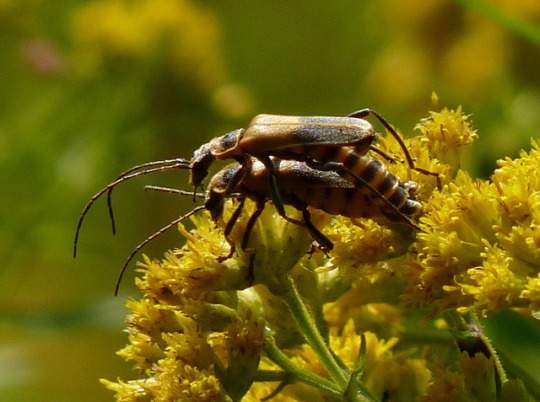
Pennsylvania Leatherwings mating (by me)
#Pennsylvania Leatherwing#Chauliognathus pensylvanicus#Chauliognathus#Chauliognathini#Chauliognathinae#Cantharidae#Elateroidea#Polyphaga#Coleoptera#Insecta#Hexapoda#Arthropoda#beetle#insects#goldenrod#Solidago#mating#summer#Thompson Park#Monroe Township#Middlesex County#New Jersey#mine
18 notes
·
View notes
Text
Red sunflower and butterfly
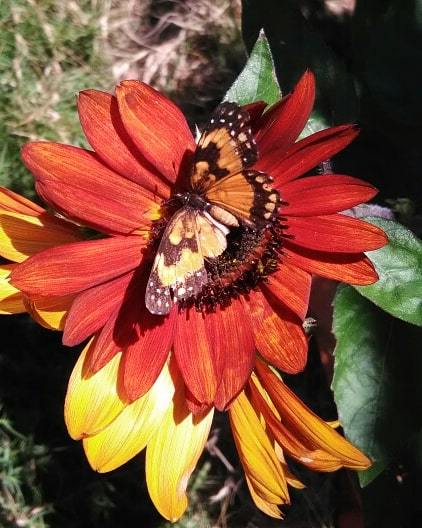
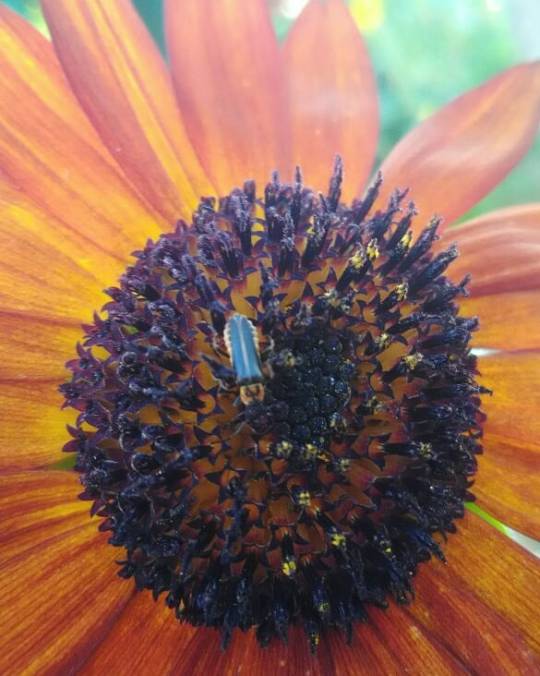

#sunflower#red#butterfly#pollination#night sunflower#polinização#Girassol noturno#Besouro Chauliognathus pensylvanicus#beetle
1 note
·
View note
Photo
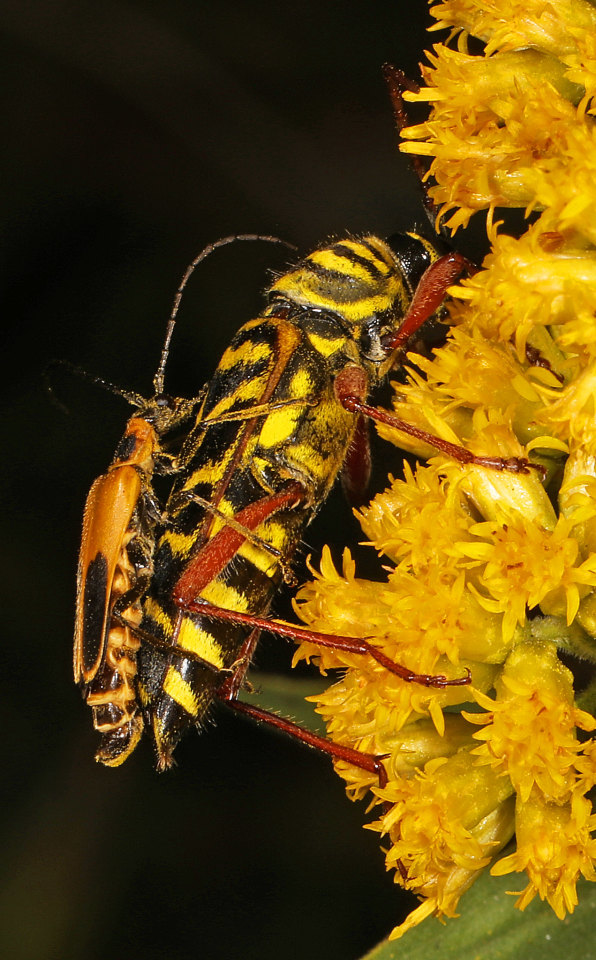
Male goldenrod soldier beetle (Chauliognathus pensylvanicus) attempting to mate with a female locust borer (Megacyllene robiniae)
Photographed in Virginia by Judy Gallagher
#animals#curators on tumblr#insects#bugs#beetle#longhorn beetle#soldier beetle#goldenrod soldier beetle#pennsylvania leatherwing#locust borer#one nice bug#spoiler: she ignored him
222 notes
·
View notes
Photo


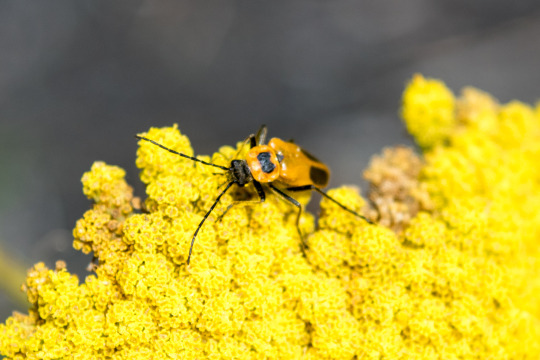

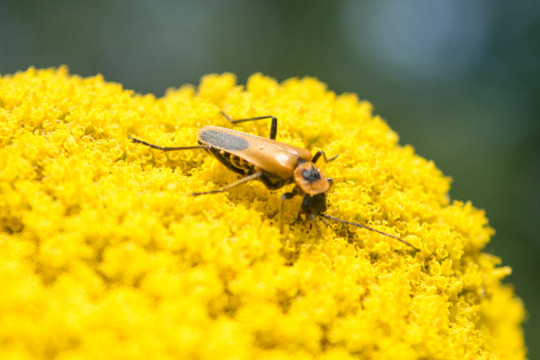
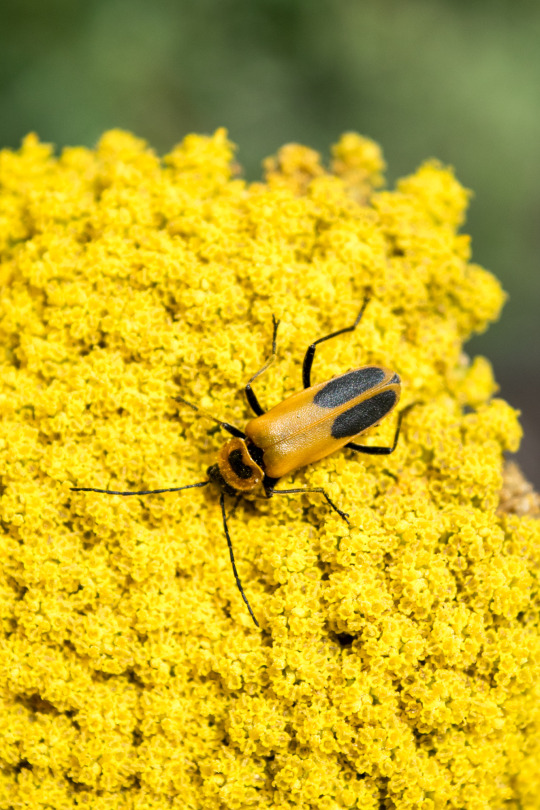
[8/14/20] Goldenrod Soldier Beetle, Chauliognathus pensylvanicus.
A fancy little man.
#beetle#beetles#goldenrod soldier beetle#insect#insects#outdesign posts things#outdesign attempts to photo#insect catalog#there were literally hundreds of these during the summer
37 notes
·
View notes
Text
What Bug Is This? 51: Goldenrod Soldier Beetles

Image source: myself
Common name(s): Goldenrod soldier beetles, Pennsylvania leatherwings
Scientific name: Chauliognathus pensylvanicus
Can it hurt me?: Nope
Can it hurt my plants?: On the contrary, they are doubly good for your plants! Firstly, they are pollinators for several species native to the United States including goldenrod and milkweed. More occasionally, they’ll feed on other small insects like aphids. Even as larvae they are predators rather than feeding on plants. Consider them a boon to your garden.
Should I kill it?: Please don’t
Anything else I should know?: Despite being beetles, they are very soft bodied insects. If you handle them, be gentle.
44 notes
·
View notes
Photo

Goldenrod Soldier Beetle ~ Pennsylvania leatherwing ~ Chauliognathus pensylvanicus ~ La Cantharide de Pennsylvanie ~ Grand cantharide jaune ~ my yard in Sparta, New Jersey #Beetle #Scarabée #Coléoptère #GoldenrodSoldierBeetle #Pennsylvanialeatherwing #Leatherwing #Chauliognathus #Chauliognatuspensylvanicus #LaCantharidedePennsylvanie #Catharide #Grandcantharidejaune #Sparta #NJ #NewJersey #Entomology #macros #macrophotography #macroofinstagram #insects #insectsofinstagram #Wildlife #wildlifephotography ~ https://www.flickr.com/photos/rachidh/albums (at Sparta, New Jersey) https://www.instagram.com/p/CEz-8K5gg1N/?igshid=9z7pxz8k2p9w
#beetle#scarabée#coléoptère#goldenrodsoldierbeetle#pennsylvanialeatherwing#leatherwing#chauliognathus#chauliognatuspensylvanicus#lacantharidedepennsylvanie#catharide#grandcantharidejaune#sparta#nj#newjersey#entomology#macros#macrophotography#macroofinstagram#insects#insectsofinstagram#wildlife#wildlifephotography
1 note
·
View note
Text

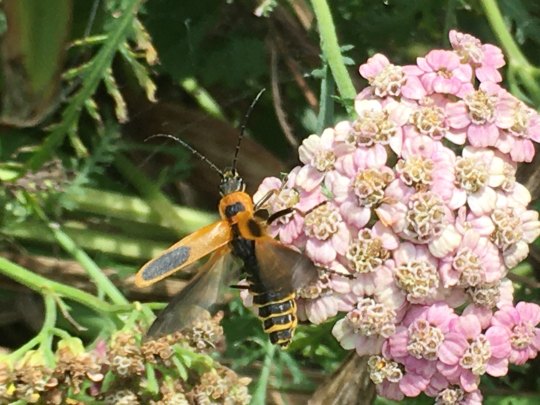
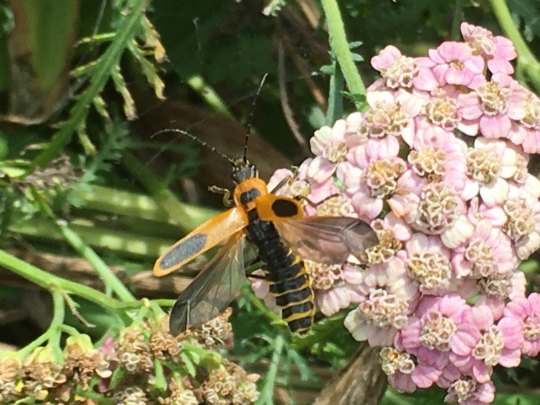
goldenrod soldier beetle, Chauliognathus pensylvanicus
2 notes
·
View notes
Photo



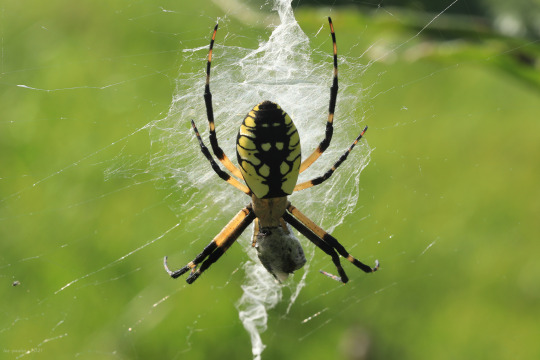

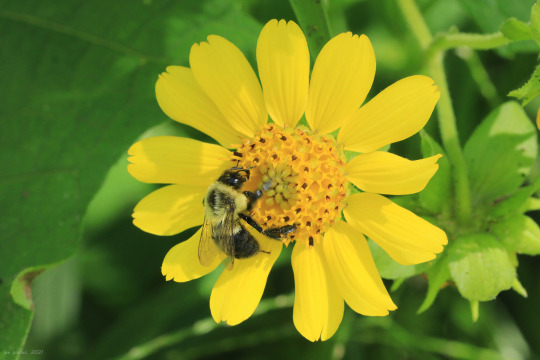




Appalachia’s Late Summer Gifts, Panel 1: warm days, cool nights, soft sunlight, surging wildflowers, sex-crazed bugs, and radiant berries.
#appalachia#vandalia#west virginia#late summer#wildflowers#flora#insects#bidens trichosperma#crowned beggarticks#chauliognathus pensylvanicus#goldenrod soldier beetle#helenium autumnale#common sneezeweed#chelone glabra#white turtlehead#argiope aurantia#black-and-yellow argiope#golden orb-weaver#ageratina altissima#white snakeroot#lindera benzoin#northern spicebush#euthamia graminifolia#flat-top goldentop#lance-leaved goldenrod#grass-leaved goldenrod#conoclinium coelestinum#mist flower#blue boneset#wild ageratum
106 notes
·
View notes
Video
Yellow-black beetle - Chauliognathus pensylvanicus by Miki Jourdan
Via Flickr:
Green Spring Gardens, Lincolnia, VA
7 notes
·
View notes
Text
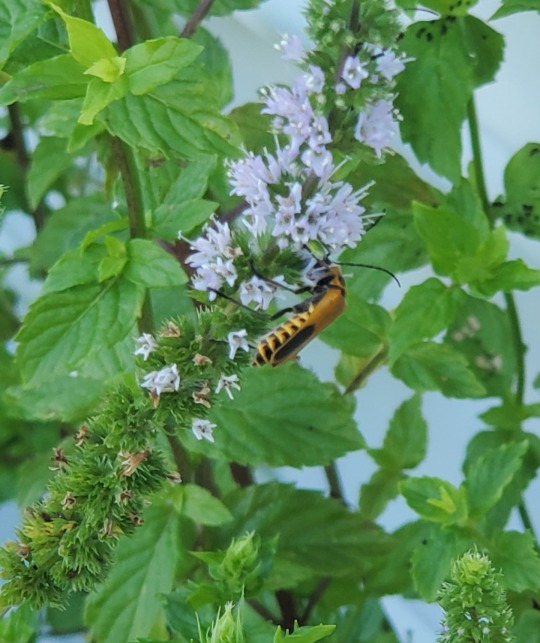
9/4/20
0 notes
